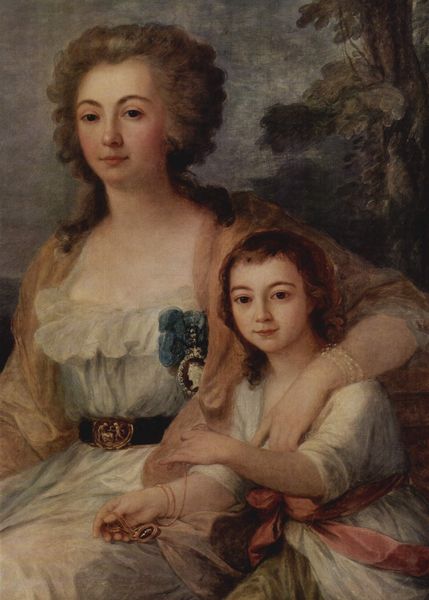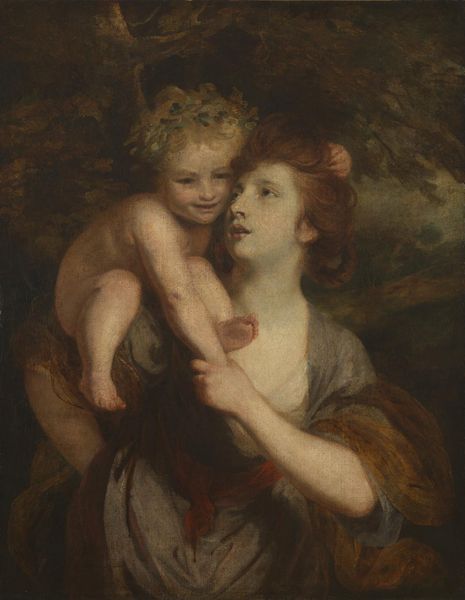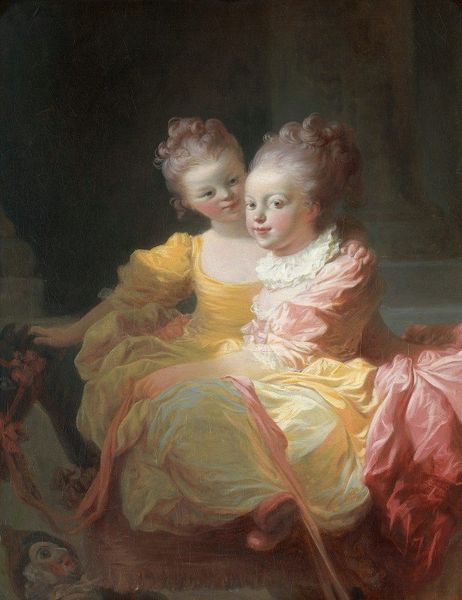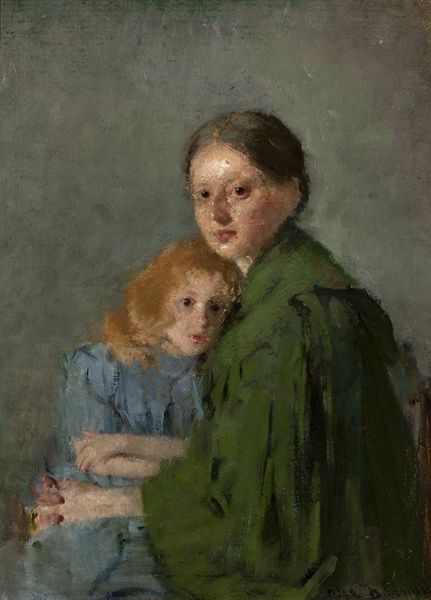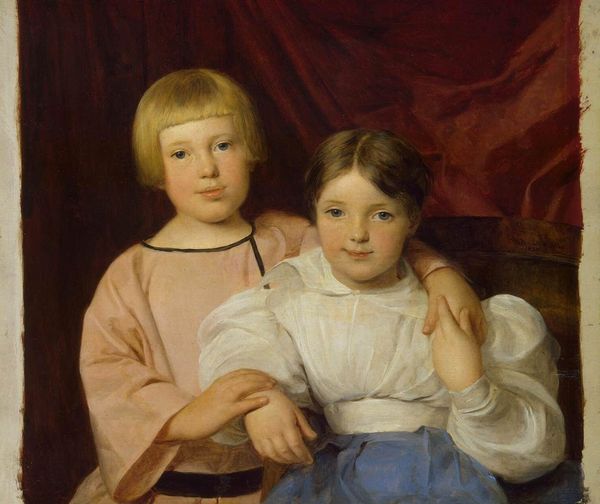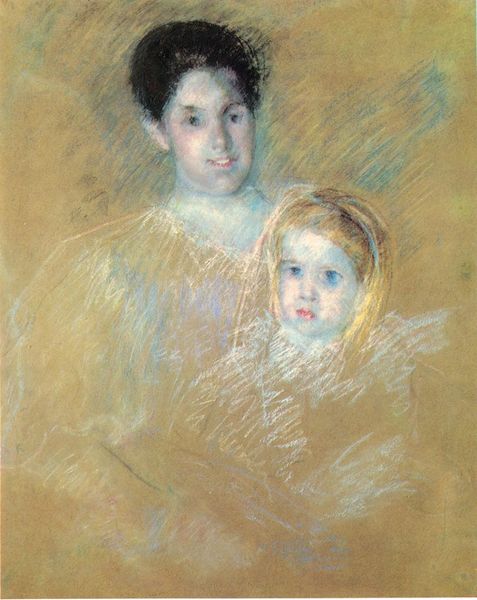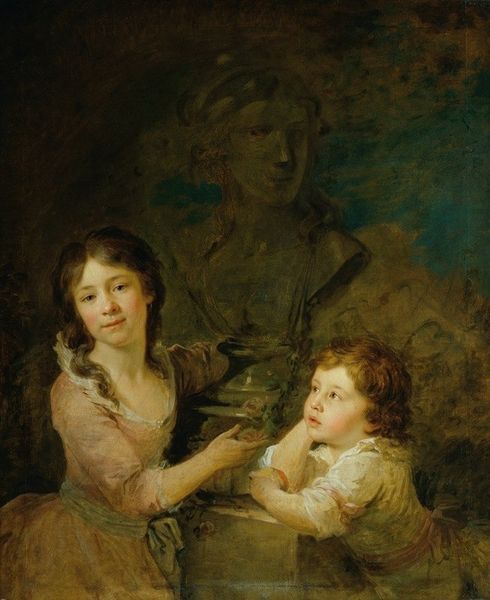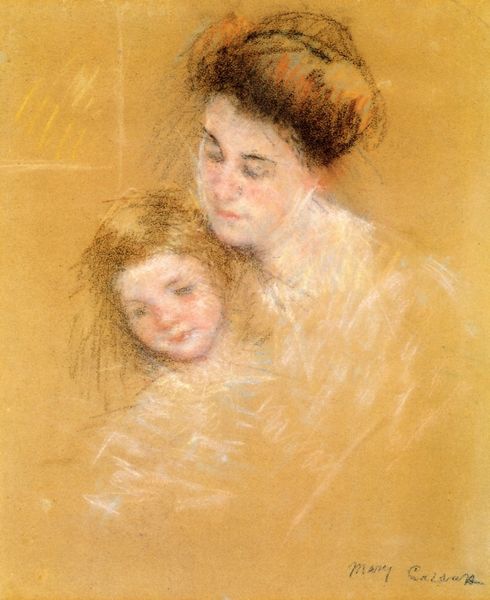
Dimensions: 76 x 63 cm
Copyright: Public domain
Curator: Upon entering this room, we're confronted with Thomas Gainsborough’s "Portrait of the Artist's Daughter with a Cat," an oil on canvas completed in 1759, and now residing here at the National Gallery. Editor: My immediate impression is of vulnerability. The girls seem almost engulfed by the stormy brushwork of the background, their faces lit with a delicate but melancholic light. Curator: The positioning is interesting; the two young girls, presumably the artist's daughters, are shown in close embrace, holding a cat, which speaks of innocence and domesticity, of course, but perhaps also fragility given the treatment of animals during that era. Editor: Absolutely, that’s clear. Notice the use of impasto—how Gainsborough builds up layers of paint to capture the texture of their dresses and the cat’s fur. And observe the color palette, dominated by muted earth tones, which certainly enhances the feeling of tenderness, or even restrained sadness, that I perceive. Curator: You know, it is quite interesting to interpret it through the symbolism inherent in portraits from that era. Gainsborough used portraiture to establish social status. But in the case of his daughters, the narrative feels so personal. Could this be less about societal expectations and more about capturing the fleeting nature of childhood and innocence? The cat also has cultural roots to many societies at the time - sometimes seen as unlucky and demonic. This feels in direct contrast to a family portrait - is it meant to evoke something more serious? Editor: That's a valid point. While portraiture served a clear social function, here the raw materiality and sensitive rendering supersede pure representation. I’m fascinated by the contrast between the carefully articulated faces and the expressive brushstrokes surrounding them; it’s as though Gainsborough is deliberately disrupting a perfectly polished image. Curator: Perhaps, indeed it hints at a hidden depth, anxieties felt or perceived beneath the surface of idyllic family life. In essence, this could represent something a lot less innocent, maybe feelings of loss and concern which parents often have. Editor: That's quite possible; in this image the artistic expression overshadows any kind of classical idealism and it does so by means of formal technique. Thanks for taking the time to speak today - this gives much more thought and clarity of this work. Curator: An absolute pleasure; you have added a lot to my own reading of it, too.
Comments
No comments
Be the first to comment and join the conversation on the ultimate creative platform.
